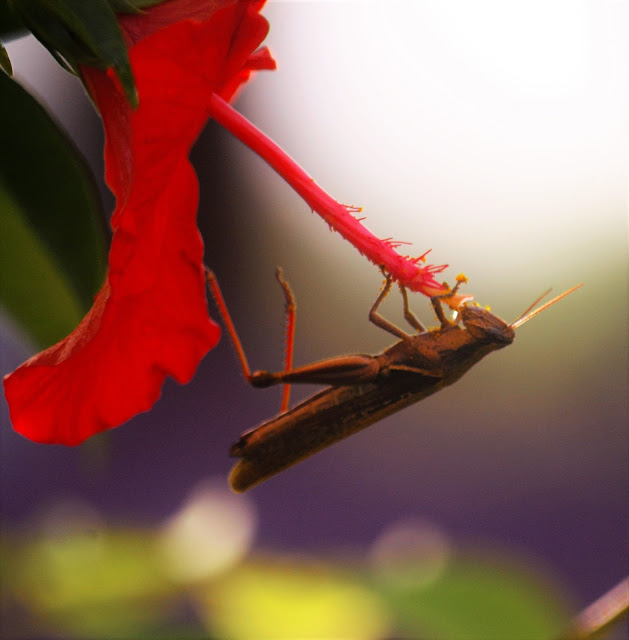 |
| Ingredients for 'Makan Sirih' - Betel or "Sirih" leaves ( Piper betel ), Kapur ( lime) and Pinang fruit or areca nut ( Areca catechu) and a mixture of spices |
 |
| Front side garden |
The palm tree at the side garden is bearing fruits. This tree is the reason why
Penang was called "Pulau Pinang' to mean island of Pinang trees. The scientific name of this tree is
Areca catechu. Many civilisation in the world are familiar with this fruit especially Indian and the Malay world civilisation. It is habitual among Indians and Malays to consume the areca nut by chewing it with other ingredients mainly the Betel leaves (Piper betel), lime or 'Kapur' (Malay) and a mixture of spices ( e.g. ketumbar, jintan manis/ jintan hitam, akar 'tahi angin' (
Radix usnea), etc.). In the top picture, I have arranged the ingredients for the culture of eating the areca nuts with other combinations which custom is called "makan sirih" in Malay. No makan sirih is complete without the Betel leaves, lime and spices. In fact because of this cultural practice many have mistakenly called the Pinang tree as the 'Betel nut' palm. Scientifically betel is a herbal plant belonging the piperaceae family whereas the Pinang tree's botanic name is Areca catechu and therefore the Pinang fruit/nut should properly be called 'Areca nut'.
 |
| The areca nut cut in half. The seed or nut need to be sliced or pounded for easier chewing. |
 |
| The ingredients ready to be wrapped in the betel leaf for chewing. |



























